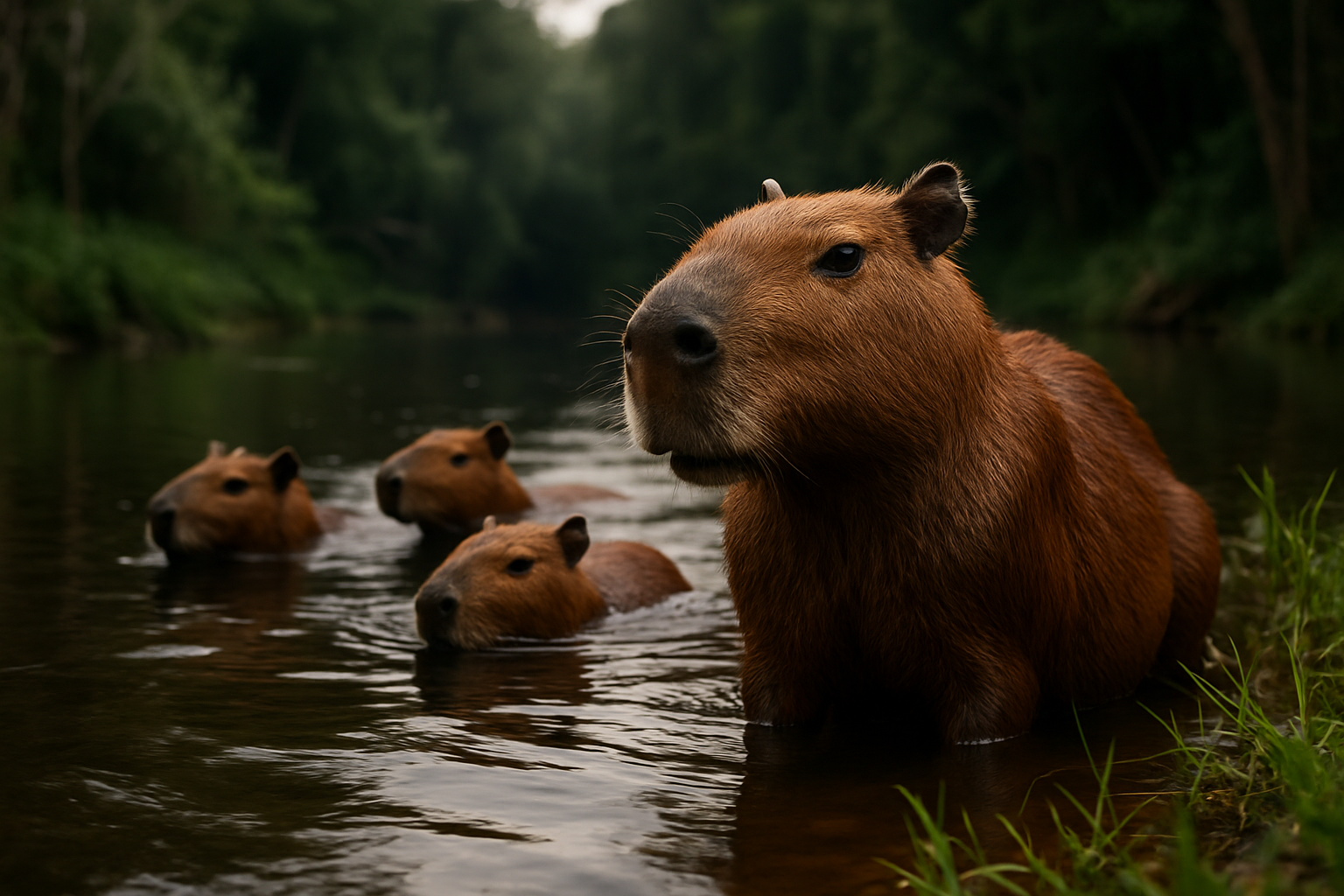The Hidden World of Capybara Social Dynamics
In the lush wetlands of South America, a fascinating creature reigns supreme as the world's largest rodent. The capybara, with its barrel-shaped body and gentle demeanor, has long captivated animal enthusiasts. But beneath their placid exterior lies a complex social structure that rivals some primate species. This article delves into the intricate world of capybara social dynamics, exploring their communal living, hierarchical systems, and unique behaviors that make them stand out in the animal kingdom.

The Evolution of Capybara Social Structures
Capybaras’ social behaviors have evolved over millions of years, adapting to the unique challenges of their semi-aquatic lifestyle. Fossil records indicate that their ancestors lived in smaller family units, but as their habitats changed, so did their social structures. The transition to larger groups offered better protection against predators and more efficient foraging strategies.
Today’s capybara herds are the result of this evolutionary journey. Their social bonds are reinforced through constant physical contact, vocalizations, and scent marking. This cohesion has allowed capybaras to thrive in environments where other species might struggle, showcasing the power of social adaptation in the animal world.
Hierarchy and Leadership in Capybara Herds
At the heart of capybara social dynamics is a well-defined hierarchical system. The dominant male, often the largest and most aggressive individual, leads the herd. He maintains his position through displays of strength and strategic alliances with other high-ranking members.
Beneath the alpha male, a complex web of relationships exists. Females have their own hierarchy, with older, more experienced individuals often taking on leadership roles, particularly in matters of offspring care and group movement. This multi-layered social structure ensures efficient decision-making and resource allocation within the herd.
Communication and Bonding Rituals
Capybaras employ a diverse array of communication methods to maintain social cohesion. Their vocal repertoire includes purrs, whistles, barks, and even subsonic rumblings that can travel long distances through water. These vocalizations serve various purposes, from warning signals to mating calls.
Physical contact plays a crucial role in capybara bonding. Group members frequently engage in mutual grooming sessions, which not only serve a practical purpose but also strengthen social ties. During these sessions, capybaras use their sharp incisors to carefully remove parasites and debris from each other’s fur, a behavior that fosters trust and cooperation within the group.
Cooperative Parenting and Juvenile Integration
One of the most remarkable aspects of capybara social dynamics is their approach to parenting. Females within a herd often synchronize their breeding cycles, giving birth around the same time. This synchronization allows for communal nursing, where mothers will feed not only their own offspring but also those of other females in the group.
Juvenile capybaras benefit greatly from this cooperative parenting system. They are protected by the entire herd and learn essential survival skills through observation and play. As they mature, young capybaras gradually integrate into the adult social structure, often forming strong bonds with peers that will last throughout their lives.
Capybara Social Intelligence and Problem-Solving
Recent studies have shed light on the cognitive abilities of capybaras, particularly in social contexts. These rodents display a level of social intelligence that rivals some primate species. They can recognize individual group members, remember past interactions, and adjust their behavior based on social cues.
Capybaras have been observed engaging in cooperative problem-solving tasks, working together to access food sources or overcome obstacles. This ability to collaborate extends to their natural habitat, where they coordinate group movements and defensive strategies against predators with remarkable efficiency.
The Impact of Human Activity on Capybara Societies
As human populations expand into capybara habitats, these social structures face new challenges. Habitat fragmentation can disrupt the formation and maintenance of large herds, potentially altering centuries-old social dynamics. Conservation efforts are now focusing on preserving not just individual capybaras, but entire social groups to maintain the species’ unique social behaviors.
Some populations have adapted to urban environments, forming smaller groups and modifying their behavior. These urban capybaras offer a unique opportunity to study the flexibility of their social structures in response to environmental changes.
Conclusion: The Enduring Allure of Capybara Societies
The complex social lives of capybaras continue to fascinate researchers and animal enthusiasts alike. Their intricate hierarchies, cooperative behaviors, and adaptive strategies offer valuable insights into the evolution of social structures in the animal kingdom. As we delve deeper into the hidden world of capybara dynamics, we uncover not just the secrets of these charismatic rodents, but also broader lessons about the power of social bonds in nature.
Understanding and preserving these unique social systems is crucial for the conservation of capybaras and the ecosystems they inhabit. By appreciating the depth of their social lives, we gain a newfound respect for these remarkable creatures and the delicate balance of their communal existence in the wild.





